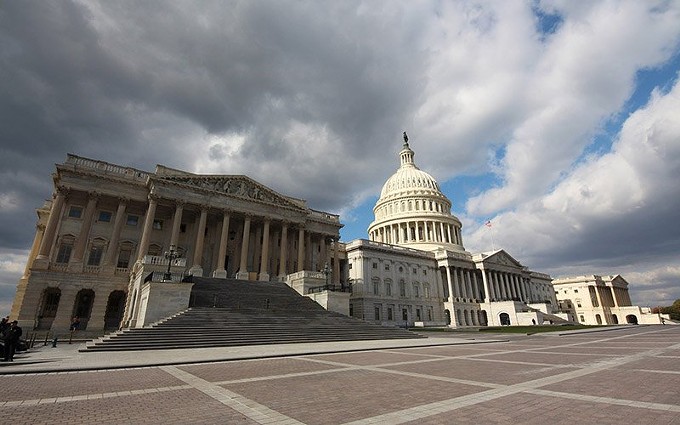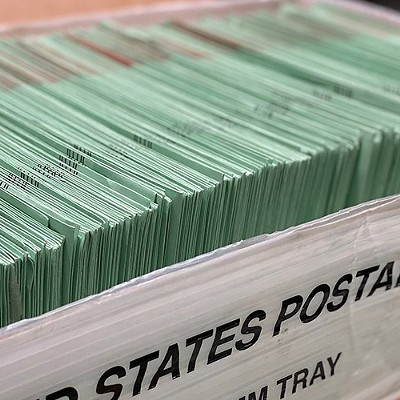Republican legislative leadership and Gov. Doug Ducey think that with forecasts of a $1.5 billion ongoing budget "surplus" the best thing to do is provide a $1.9 billion tax cut that goes overwhelmingly to wealthier households through a "flat" tax and neutralizing the tax impact of Prop 208 on the top 1%.
Note that "surplus" here means projected revenues against a baseline of ongoing formula expenditures that excludes one-time funding areas that are not necessarily really one-time and ignoring any areas not currently adequately funded or formulas no longer being filled (such as for community colleges).
Yes, that's aggressive mathematics—but fear not, it will have such strong dynamic growth covering one-third of the costs that all will work out in the end. The market tells us so—at least that's what economist Jim Rounds calculates.
Comparisons to Kansas that enacted a proportionally smaller income tax reduction geared toward its wealthier residents that led to catastrophic results, we are told, were because in Kansas they were totally drinking the Kool-Aid thinking tax cuts actually pay for themselves, while here we're being conservative.
Proponents have two goals in mind: creating a flat personal income tax instead of a progressive income tax and making sure that the Prop 208 surcharge does not hurt the top 1%. In other words, the most important priority for the state is protecting the well-off.
Prop. 208 though passed by voters must still survive an Arizona Supreme Court challenge related to spending too much money on education.
Wait—Prop. 208 could be thrown out because it spends too much money on education? Yes, while we do not have a constitutional limit on how much we can cut taxes for rich people, we do have a constitutional limit on how much we are allowed to spend at the state level on education. That we are almost at the bottom for state-funds per pupil to K-12 education (as opposed to local or federal) is of no concern to the lawmakers who could be sending us a request to get rid of such an ill-founded limit. Prop 208 has wording designed to evade the limit, but the Arizona Supreme Court will have the final say...soon.
In the world these policymakers live in, rich people are known as "job creators" or the vernacular "geese that lay golden eggs." The rest of us don't really count in this world—as we merely fill jobs, we don't create them—and we don't provide anywhere near the productive capacity that rich people do.
How do we know this? They are rich and the market gives to each according to their economic contribution. It says so in small invisible ink in Adam Smith's Wealth of Nations—not to mention in the Prosperity Gospels found alongside Matthew, Mark, Luke and John in the Bible.
Yes, there may be truth to the rumor that the real reason the legislature went on recess before Memorial Day was because someone had sighted the invisible hand of the market—and they flocked to the scene to worship it. Mind you that's only rumor—it's perfectly possible the Senate President really did have a vacation planned in Hawaii.
Flat taxes are notoriously regressive normally. Usually to lower the rate for the rich, you need to massively raise our rates so that the system is revenue neutral. But alas, when a budget surplus is seen instead, they can lower the rates for everyone. Of course, lowering the top marginal rate from 4.5% to 2.5% for married couples earning more than $300,000 is not exactly equivalent to lowering the lowest marginal rate from 2.59% to 2.5%—so, yes, technically, the number of households getting $15 or less out of the "flat" tax change will more than double those who get $1,000 or more.
And in some areas of the state the difference is more drastic. In Pima County, it's three times as many getting $15 or less; in Gila County, it's eight times as many.
You may be shocked to discover that the number of kids most at risk of not completing high school is related to where the people getting $15 or less live. So the places that most benefit from the "flat" tax, like Catalina Foothills or Paradise Valley, are not the places that could most use new state investments to help children be successful in school—such as Sunnyslope, Globe or Glendale.
Even if the "flat" tax fails, there's good money betting that the legislature will still carve out a break for the top 1% to spare them from having a top marginal rate of 8% on their incomes above $250,000 (individuals) or $500,000 (married or head of household). Prop 208 added a 3.5% surcharge for these higher income amounts. Grand Canyon Institute estimates that over 10 years, that surcharge could mean 10,000 out of more 3 million jobs would be lost in the few small businesses that would be impacted by the surcharge. Of course, for those drinking the Kool-Aid, the Goldwater study that says 124,000 or more jobs would be lost—or more than one in six jobs at impacted small businesses—is what you believe to be gospel truth.
GCI instead has argued that investments that target the most at-risk students by making permanent changes to the public school funding formula is a much more prudent use of $800 million of the projected "surplus." It not only provides dynamic returns in future economic growth, it targets rural and lower-income communities. It's called an "opportunity weight."
How long do we have to wait for an opportunity to be seen as just as important as the people perceived as blessed by the market?
Dave Wells is research director for the Grand Canyon Institute, which has done multiple analyses found at its website http://GrandCanyonInstitute.org. The views and sarcasm expressed are his own and may not reflect the views of the Institute and its Board of Directors. Reach him at DWells@azgci.org.











